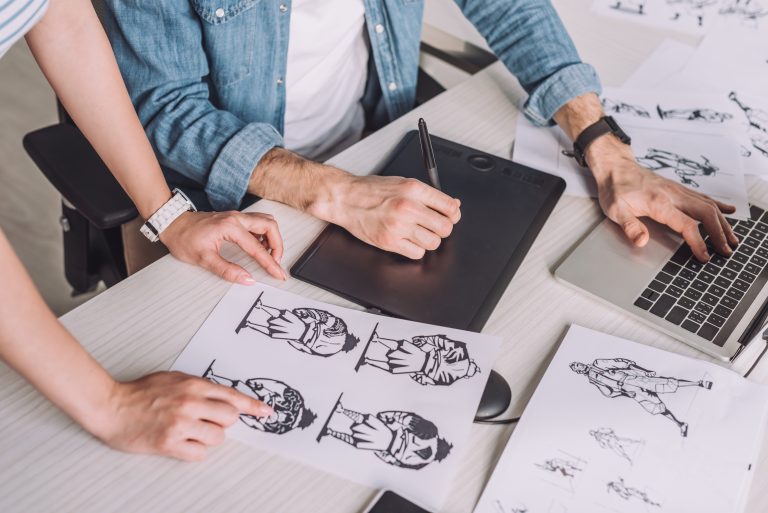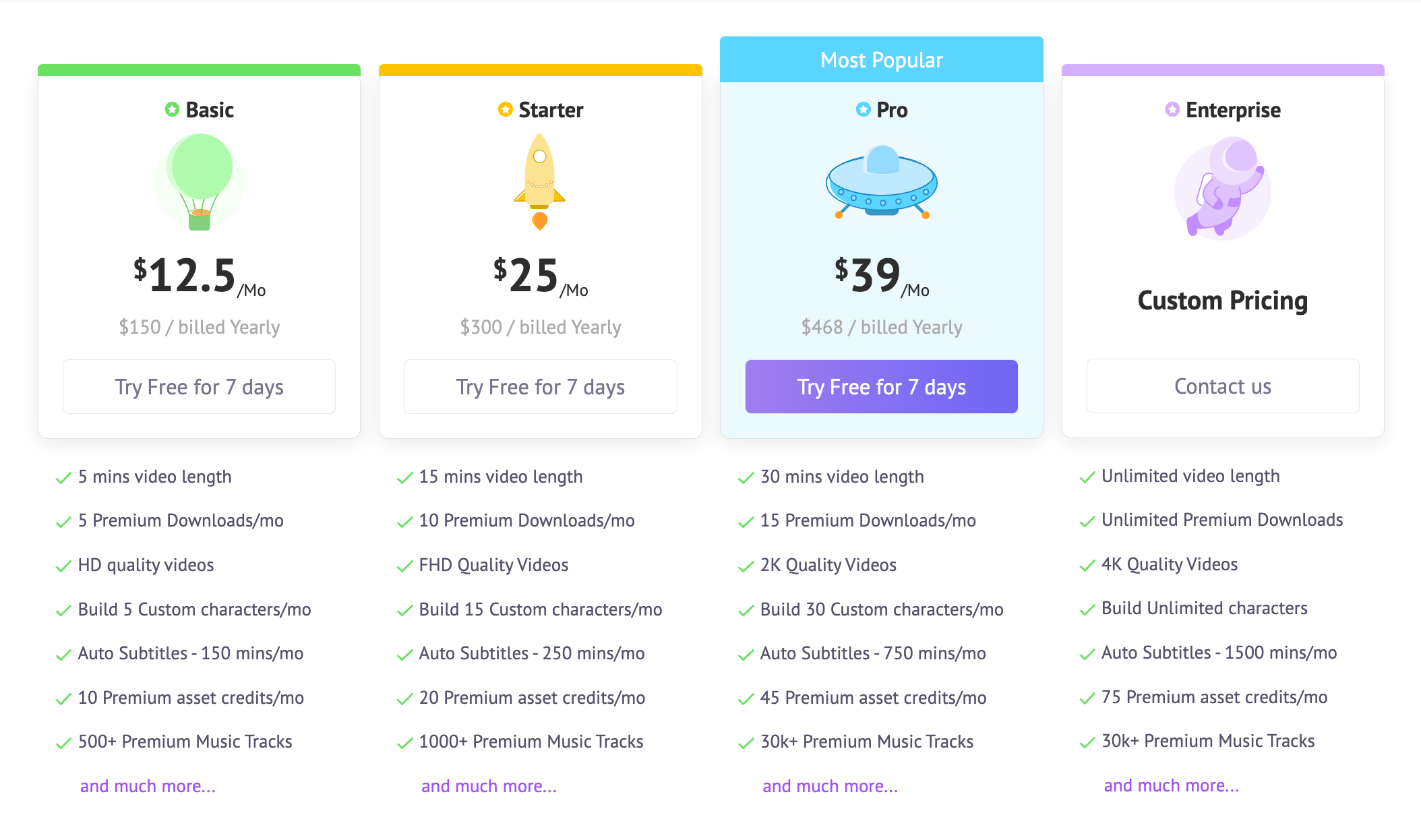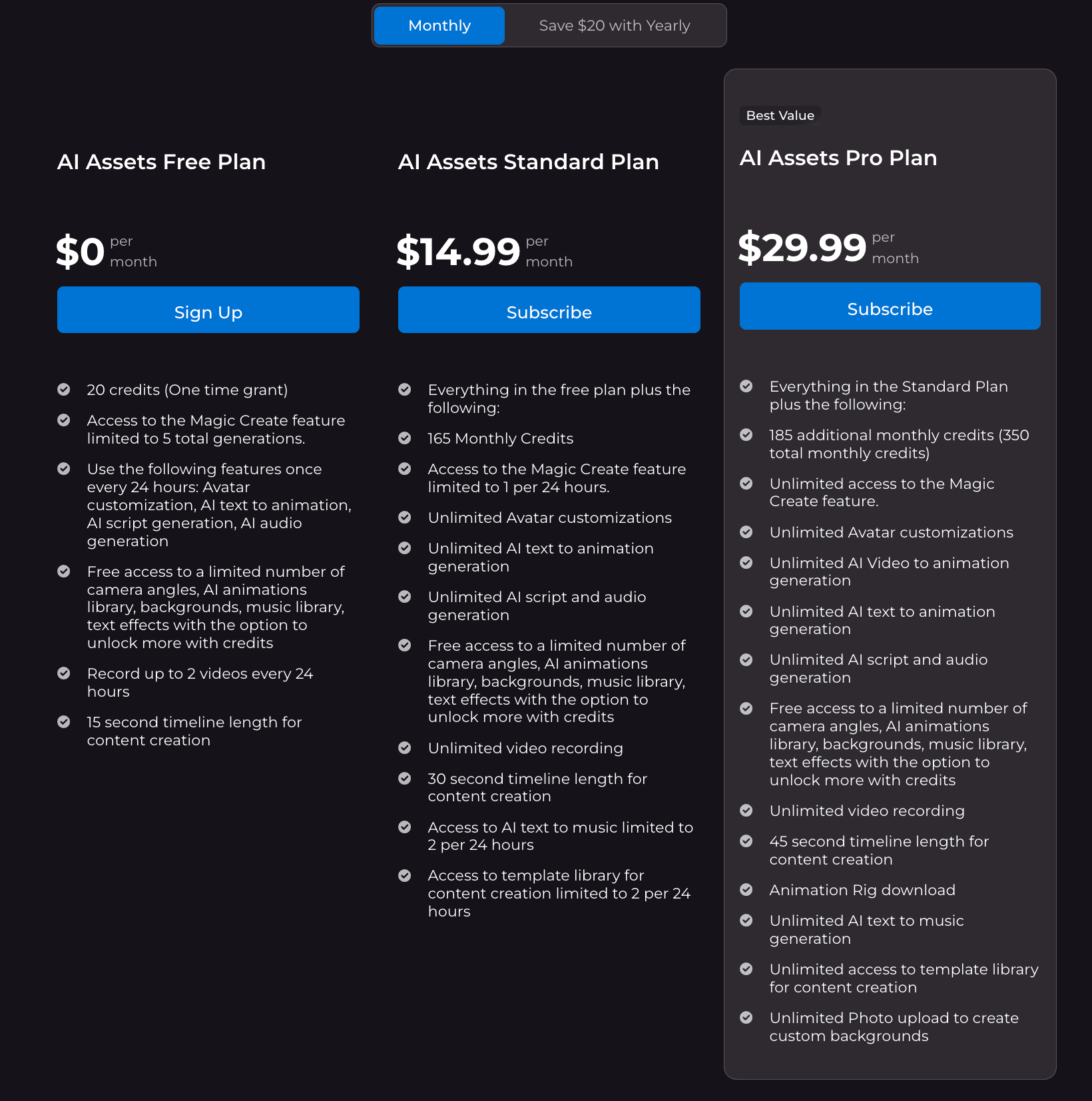Published on: June 20, 2023 Updated on: January 24, 2024
AI Generated Animation: a Beauty or a Beast?
Author: Alex Tyndall

Animation is a cornerstone of visual media. That is beyond contention.
Studios such as Pixar, Disney, and Studio Ghibli have given rise to some of the most beloved and critically acclaimed films of all time. The Lion King, Toy Story, Up, and Wall-E, to name a few, are timeless classics. In every frame, it’s clear to see the level of love and dedication that went into making them the best they could possibly be.
But is this all about to change?
With the continuous developments in AI technology, some people have turned towards generative algorithms to produce animations. However, this has been a highly divisive move, and one which multi-award-winning director Guillermo del Toro has called an “Insult to life itself”.
Let’s take a look.
A brief history of animation
Before we can properly weigh up each side of the argument, we need to be clear with what we mean by ‘animation’.
Originally, animation involved the meticulous photography of individual drawings or inanimate objects like puppets. When these photos were shown in quick succession as a reel of film, the images would appear to move in a life-like manner.
The art of moving pictures has been around for hundreds of years. The phenakistoscope, for example, is a spinning wheel or drum with sequential images drawn around the outside. When the wheel is spun quickly, the images seem to merge together and become animated. This traces its origins back to around 1833 – decades before we’d see animation displayed on a screen.
In 1892, French inventor Charles-Émile Reynaud displayed his 15-minute animation, Pauvre Pierrot, at the Musée Grévin in Paris.
In 1906, J. Stuart Blackton created Humorous Phases of Funny Faces, drawn in chalk. Then, in 1908, Émile Cohl produced Fantasmagorie, often cited to be the first true example of traditional animation.
From there, the stage was set for more and more developments.
- The first colored animation, Fiddlesticks, was produced in 1930 by Ub Iwerks, the co-creator of Mickey Mouse.
- Disney were the first to introduce parallax to animation in 1937 with Snow White and the Seven Dwarves.
- In 1950, the first animated character created specifically for television, Crusader Rabbit, was created and aired.
- Live-action and animation was combined for the first time in Alfred Hitchcock’s 1958 film Vertigo.
- A brief informational video by Bell Labs from 1963 shows a satellite orbiting a planet. This is the very first example of 3D animation.
- In 1972, Ed Catmull (the founder of Pixar) presented the first proper rendering of a 3D model. It showed a video of his hand, scanned digitally and animated using computers.
How does AI animation work?
There are several ways in which a creator can use AI, with varying degrees of success. Ultimately, as the software develops, AI art will become more advanced and polished which will lead to better results.
Here are just a few ways that AI can be used when it comes to producing an animation.
Live-action rotoscoping
Recently, YouTube group Corridor Digital met with significant backlash over one of their videos which looked at turning live-action video footage into AI generated animation.
Essentially, they built upon a process known as diffusion, where AI image generators develop new images from existing ones by adding “noise” (blur/pixelation). Whilst this has previously only been conducted on still images, the Corridor Crew used techniques demonstrated by another YouTube channel called Hoppss and applied it to a full video.
Using data taken from existing animations such as the anime Vampire Hunter, they trained their animation tool to stay consistent with only one style. Then, they fed the AI images of the real-life actors to help it recognize people, movements, and emotions.
Here’s what they ended up with:
Whilst it certainly isn’t perfect, this AI video nonetheless presents a quick way to take a live-action performance and add the dynamic elements of animation.
Conventional motion-capture uses hundreds, if not thousands, of sensors placed on an actor’s body to help build a 3D model on a computer. Conversely, this just needed the raw footage of actors against a green screen.
Machine learning with human adjustments
One of the most critically acclaimed animated films in recent years, Spiderman: Into The Spiderverse, and its sequel, Spiderman: Across The Spiderverse, made use of machine learning to assist in the development of both films.
This is a clear example of where AI has been used as an assistive tool rather than as the main creative driving force. The aim was to ease the workflow of animators by providing shortcuts to ease the transition between 2D and 3D animation. This allowed the film to maintain its key comic-book style without sacrificing 3D models and assets.
One core criticism of AI is that it takes jobs away from industry professionals. Whilst this is an incredibly valid concern, Across The Spiderverse still ended up having the largest crew of any animated film ever, with over 1,000 artists working on it over its 5 years of development.
The insane attention to detail and consistent high-quality came about through the perseverance and dedication of a human staff. It just so happened that AI was utilized to make these animators’ unbelievably difficult jobs just that little bit easier.
AI-generated images
As we’ve seen, you don’t need to use AI to complete every bit of your animation. In fact, it can be useful to focus on one or two specific areas where it can make the most difference.
For example, you can develop AI images through programs such as Midjourney or Dall-E which you can then use as backgrounds. This gives you more time to focus on getting the movement of your animation as smooth as possible.
Certain animation studios, such as Toei Animation in Japan, have already turned to using this new technology for backgrounds or color blocking. This studio is famous for producing internationally acclaimed animes such as Sailor Moon, Dragon Ball Z, and One Piece. Now, due to labor shortages and high production costs, they’ve looked at how AI can be used to lessen repetitive and time-consuming tasks.
Why are people worried about AI in animation?
The animation process has continuously found ways to adapt since its emergence at the turn of the 20th century. Now, AI tools seem to be entering the scene as the latest stage of evolution. This has caused a lot of contention within the creative world, with many people saying that the use of new AI systems is damaging the integrity of animation.
At its core, animation is a form of expression. The careful thought and consideration that goes into creating an animated video is an act of love – something that a robot cannot reproduce.
Here are some of the key concerns raised whenever the subject of AI in animation is raised:
- An animator’s worth: There are fears that using AI devalues the work and skill of animators, who spend all their lives honing their craft to make sure every detail is perfect. Whilst these concerns were raised previously when computer animation began to develop, clear examples of how humans and machines could work together alleviated worries. However, the use of AI is fundamentally different, as there is far less human involvement and interaction. In essence, the machine is left to develop itself. A deep-seated worry is that this will render human animators meaningless. And when animators are already grossly underpaid for their work on average, the use of AI feels cruel and exploitative.
- Replication, not originality: Fundamentally, AI cannot create anything ‘new’. Rather, it amalgamates training data and delivers a collage of previous peoples’ work. This leads to many issues concerning plagiarism, copyright, and fair use, since many AI algorithms use scraping tools to gather training data without the consent of the original artists.
- Human nuance: All animation has the love and attention of a human put behind it, whether it’s drawn traditionally on paper or moved frame by frame on a computer. Easter Eggs, subtle movements, and dashes of humor are what help audiences connect to what they see on a screen. These nuances are lost when AI is used extensively.
- There’s no point: Whilst AI has many uses in the world and can be a source for good, why is it needed in the animation industry to begin with? Repetitive animation tasks give interns, graduates, and beginners the chance to gain experience and understand what it’s like to work in a studio environment. AI takes those opportunities away. Anyone can learn to draw – even those born without arms. When there are free tutorials online for how certain pieces of animation software such as Adobe or Blender work, it feels as though AI is just a lazy cheat. In their video, Corridor Crew discussed wanting to “democratize” animation, but many people online have already pointed out that there’s no need. Anyone is capable of learning to draw and animate in the same way that anyone is able to learn to read, write, or talk.
Want to try it for yourself?
Luckily for you, there are plenty of AI animation tools out there, making it incredibly easy for you to create videos. Let’s take a look some of the top artificial intelligence tools out there.
Animaker
Animaker is an AI animation generator that enables users to create high-quality animations by simply typing a prompt of an idea. This text-to-animation app has a simple user interface that makes creating animations quick and easy.
The animated videos produced reflect the video creation process. They are often simple and not necessarily the most advanced visuals, but they can be effective for those trying to create animated videos for the first time.
It also offers video editing tools so you can achieve any animation videos you like!
You can try this tool for free for 7 days, but after that, you will be billed monthly. There are four different pricing plans which you can see below.

Krikey AI animation maker
Krikey AI makes the animation creation process as easy as possible, without sacrificing great results. It produces professional looking high quality animations from templates and a huge library of animated videos. However, you can also upload videos or provide text prompts to create a completely original AI animation.
This AI tool makes creating 3D animation accessible for all users. Its step-by-step instructions and different features mean just about anyone can create animation videos.
And, it’s surprisingly affordable! With three separate pricing plans, including a free version, anyone can generate animations. See the details below!

Final thoughts
The debate around whether or not AI has a place in the animation industry isn’t going away any time soon; there’s just too much at stake. In the same way that many writers are fearing for their livelihood due to programs such as ChatGPT, animators and artists worry that they may also be replaced by the ever-evolving AI programs that are constantly displayed across social media.
AI should be used as a tool to help add to, not replace. Whilst it may be visually impressive, it lacks the emotional connection that human animation provides. Why would we want machines to take that away?
What do you think? Is AI the future or the downfall of animation? To find out more about the world of AI news and content, stay up to date with Top Apps.
Alex Tyndall
With a passion for exploring the latest apps and software, she brings a wealth of knowledge to her role as a professional writer at TopApps.ai.
Recent Articles

The Crowdstrike outage of 2024 sent shockwaves through the cybersecurity world. On July 19, a defect in a Windows content update brought down...
Read More
The Crowdstrike outage of 2024 sent shockwaves through the cybersecurity world. On July 19, a defect in a Windows content update brought down...
Read More
On July 15, 2024, Microsoft and CrowdStrike faced a global outage. This disruption affected millions of users worldwide. Azure services, Microsoft 365 apps,...
Read More